January 16, 2024
What Are the Housing Market Predictions for the Next Five Years?
In today's housing market, professionals face a complex landscape.
High interest rates and a limited supply of homes have created a challenging environment, sparking concerns about affordability and market stability.
These conditions test even the most seasoned real estate experts as they navigate an unpredictable market where traditional strategies may no longer apply.
Despite these challenges, opportunities for growth and adaptation remain.
This article will dissect the intricacies of the current market and project forward, providing a clear
perspective on what the next five years might hold.
We'll explore key trends, potential shifts in mortgage rates, and the evolving dynamics of supply and demand.
Armed with this knowledge, real estate professionals can develop strategies to not only survive but thrive in this ever-changing market.
Stay ahead of the curve and prepare for the future with insights and analyses tailored to today's real estate landscape.
The Current State of the Housing Market
Today's housing market stands at a crossroads, marked by high interest rates and a scarcity of available homes.
These conditions have thrust the market into an affordability crisis, significantly impacting buyers and sellers. Rising mortgage rates, a key factor in this scenario, have cooled a once fervent buying interest.
This shift is reshaping price trends.
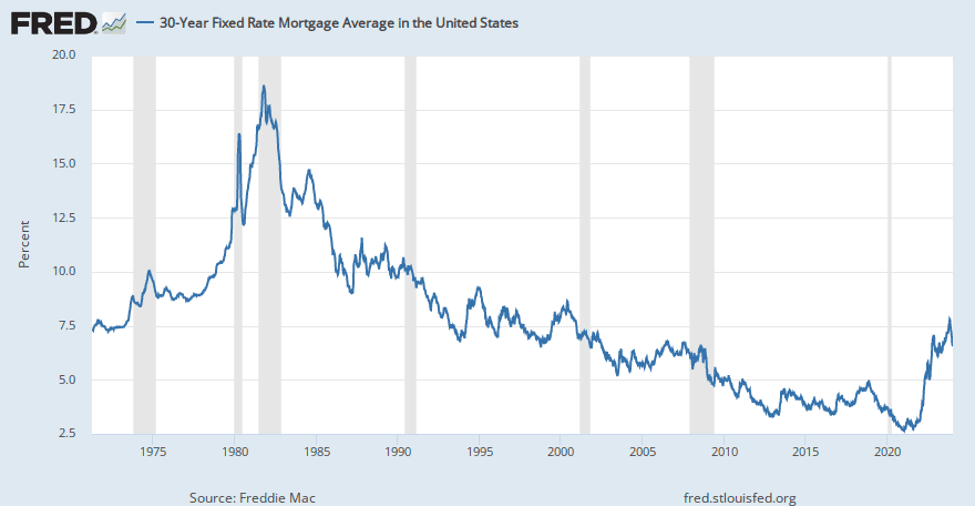
Contributing to this challenging landscape is the constrained supply of new homes.
Factors like high construction costs and limited labor availability hinder new developments.
This shortage in supply has put upward pressure on home prices. In 2023 alone, construction costs saw a rise of up to 7%, partly due to major increases in the cost of supplies like lumber, steel, and concrete.
This ultimately makes the dream of homeownership more elusive for many, especially first-time buyers.
Despite these hurdles, the market also presents opportunities for adaptation and growth.
Real estate professionals must now navigate this complex environment with innovative strategies, focusing on understanding local market dynamics and leveraging them advantageously.
As we look forward, the market demands agility and informed decision-making from professionals aiming to succeed in this new reality.
Predictions for the Future of the Housing Market
The housing market in the next five years could look quite different. For those in real estate, it's important to keep up with these updates to make smart choices in a changing market.
Let’s look at some data-based predictions on what the next five years hold for the housing market.
Forecast for Mortgages and Interest Rates
We expect clear mortgage and interest rate trends in the next five years.
In 2020, we saw record-low mortgage rates as low as 3.1%. But three years later, they rose dramatically, reaching over 7%.
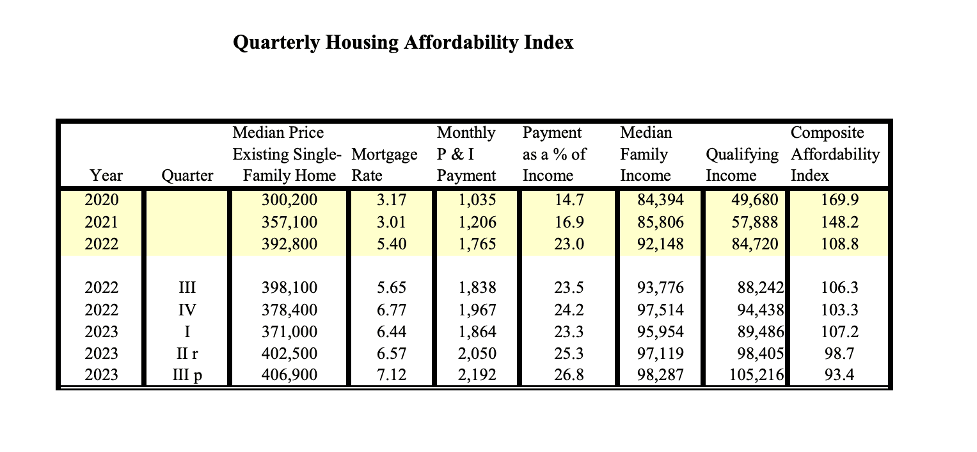
The current upward trajectory in interest rates will continue for a bit, but further into 2024, they should stabilize.
Why do we think this?
Experts consider factors like inflation and economic health. If inflation stays under control and the economy grows steadily, mortgage rates should find a balance.
They won't be super low, but also not too high.
The Federal Reserve, which helps manage our economy, will play a big part in this. It’s working to keep inflation in check, so its decisions affect mortgage rates.
Unless something unexpected happens (like another global pandemic or financial crisis), we believe rates will even out.
Danielle Hale, the chief economist at realtor.com, referenced this recently:
“Mortgage rates will continue to ease in 2024 as inflation improves and Fed rate cuts get closer,” she said in an emailed statement to Forbes. “Mortgage rates could near 6.5% by the end of the year, a key factor in starting to provide affordability relief to homebuyers.”
For people in real estate, this means preparing for changes.
As mortgage rates find a middle ground, expect more buyers and different housing demands. Keeping up with these trends will be essential for making good decisions.
Will Home Prices Increase or Decrease?
In 2024 and beyond, several factors can influence home prices.
Regional trends play a significant role — we saw home prices grow 4.8% at the end of 2023 alone.
Interest rates are a primary driver impacting home prices. We expect the extreme heat in the market observed in previous years to cool down as rates stabilize.
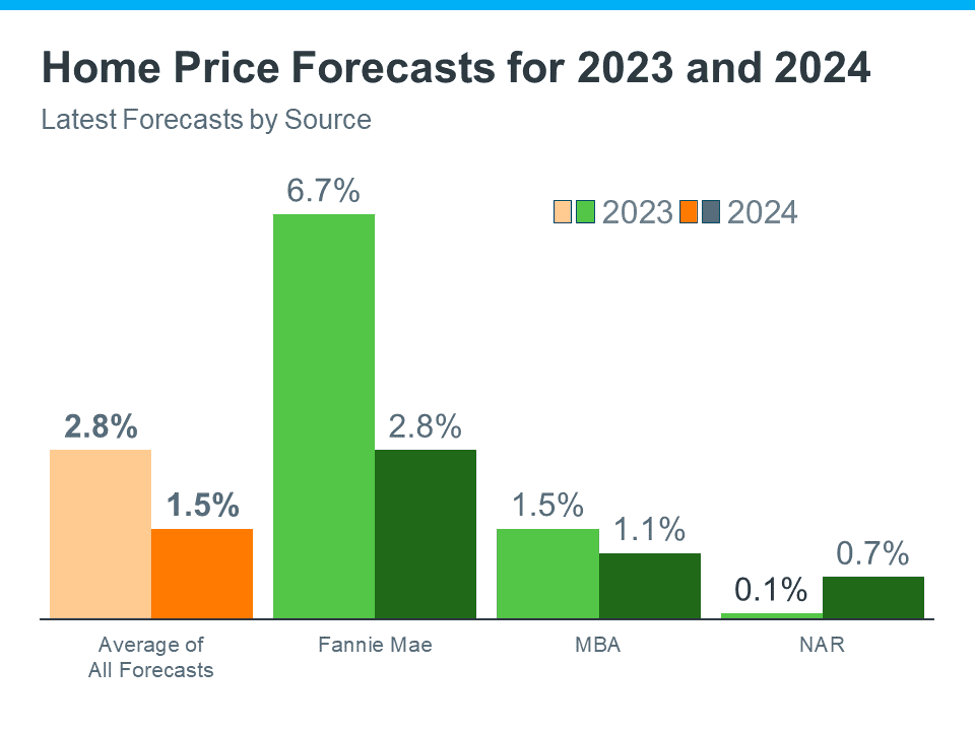
This cooling trend might lead to a stabilization or even a slight decrease in home prices. That’s particularly true for markets that experienced rapid growth during the boom years.
However, this trend won’t be uniform across all regions. Some hot markets, especially those with solid job growth and population influx, may continue to see price increases.
But we should note that it comes at a slower pace.
Local market conditions, including housing supply and demand dynamics, will also critically impact home prices.
Areas with a tight supply of homes and strong demand may maintain higher price levels.
Conversely, markets with growing inventories and less competitive demand could see more significant price adjustments.
The Home Price Expectation Survey by Fannie May predicts that 2023’s massive price increase of nearly 4% would “be followed by slower growth in 2024 and 2025 of 2.4 percent and 2.7%, respectively.
The prediction for home prices in the coming years points to a complex and region-specific landscape.
Some areas may experience a decline in prices. Others might continue to see growth. Local economic conditions and housing inventory levels influence these outcomes.
Will the Housing Market Recover?
The housing market's recovery relies on several factors.
They must converge to create a more stable and sustainable environment.
Key among these are the increase in home inventories, cooling of interest rates, and a return to more normalized mortgage rates.
The market's recovery hinges on the availability of homes for sale.
Higher inventory would help balance the market. It’d offer more options for buyers and ease the competitive pressure on prices.
This increase in inventory could come from a boost in new home construction and existing homeowners deciding to sell. Economic stability and improved consumer confidence can help encourage this inventory growth.
Interest rates also play a vital role in the housing market's health.
Returning from the recent high rates could rejuvenate buyer interest and activity. However, this recovery could be gradual as the market adjusts to new economic realities.
“For home buyers who are taking on a mortgage to purchase a home and have been wary of the autumn rise in mortgage rates, the market is turning more favorable, and there should be optimism entering 2024 for a better market,” Jessica Lautz, Deputy Chief Economist at the National Association of Realtors (NAR) said in a statement on market predictions after 2023.
Buyers could also become more cautious when making financial decisions.
Predictions indicate that a full-scale housing market crash is unlikely. However, the market may experience a slower pace of growth as it moves toward recovery.
This phase could see adjustments in average home prices. It could also see shifts in housing demand and changes in buyer behavior.
Will Housing Inventory Increase?
The question of whether housing inventory will increase over the next five years is pivotal. It's important for understanding the future dynamics of the real estate market.
Expert forecasts and market analyses suggest several factors could contribute to an inventory uptick.
One significant factor is improving mortgage rates.
“Supply will loosen up in 2024,” said Lisa Sturtevant, the Chief Economist at Bright MLS.
“Even homeowners who’ve been characterized as being ‘locked in’ to low rates will increasingly find that changing family and financial circumstances will lead to more moves and new listings over the course of the year — particularly as rates move closer to 6.5%.”
If rates stabilize or decrease, it could encourage more homeowners to sell. This could increase the supply of homes on the market.
In addition, a positive shift in builder sentiment and an uptick in building permits are essential indicators. They suggest an increase in new home construction. This directly contributes to a rise in housing inventory.
Economic stability can also play a crucial role. As the economy stabilizes and consumer confidence grows, more people may feel inclined to enter the housing market as sellers or buyers.
Demographic shifts also influence the supply and demand dynamics in various housing markets.
These include populations moving to different regions. They might also include changes in household formation patterns.
Building costs for residential properties could grow by between 2% and 4%, according to JLL.
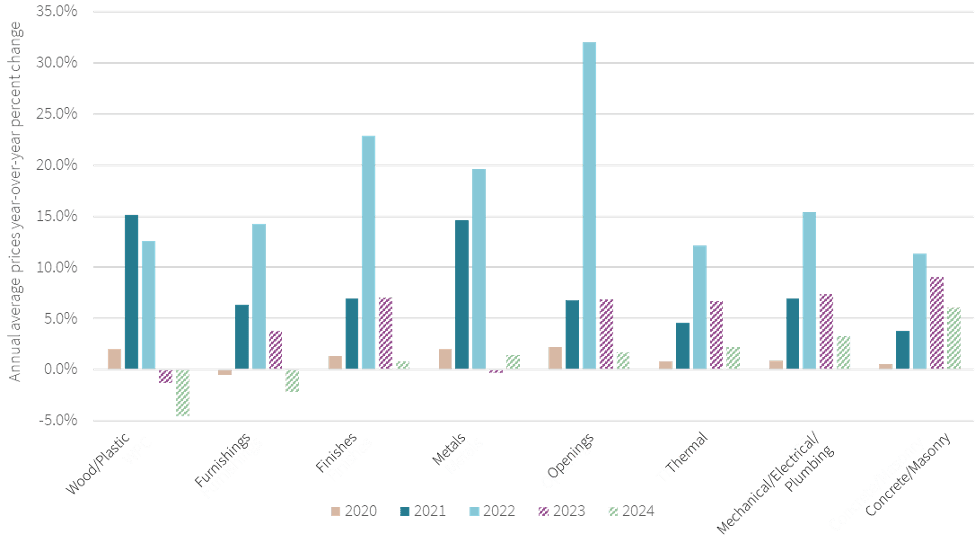
There are indications of a potential increase in housing inventory over the next five years. However, this trend depends on a range of economic and demographic factors.
The interplay of these elements can shape the availability of homes for sale. It can also affect the overall health of the real estate market.
Will We Shift to a Buyer's Market?
The potential shift from a seller's to a buyer's market in the coming years depends on several key factors.
These include mortgage rates, the pace of new construction, and overall inventory levels. All of these vary by geographical location and collectively influence market balance.
Market analysts expect mortgage rates, a significant determinant of market dynamics, to stabilize. This could ease the pressure on buyers. It’d make home purchases more accessible, especially for first-time buyers.
“Mortgage rates have already retreated from recent peaks near 8% and may fall further,” Mark Fleming, Chief Economist at First American, said.
Lower rates would likely increase buyer interest, leading to more activity in the market.
New construction also plays a crucial role in shifting market dynamics.
We should, therefore, see improved builder sentiment and material availability. These drive an increase in building permits and construction activity.
This means a big rise in housing inventory.
This increase in supply is essential for transitioning to a buyer's market. It provides more options and bargaining power.
Geographical variations will also impact the shift. Some regions may experience this transition sooner.
This is mainly due to specific local factors, such as:
-
Population movements
-
Economic growth
-
Job opportunities
These factors influence demand and supply, affecting the market's balance.
Overall, some areas will shift to a buyer's market soon. However, not all regions will change in the same way.
Before
After
Real Estate Market Trends and Data for 2024
As we step into 2024, the real estate market continues to evolve.
It's under the influence of various economic forces.
This section explores key trends and data shaping the industry. It provides insights into the significant factors impacting market dynamics.
We’ll explore how ongoing inflation concerns and median home prices influence the real estate landscape.
Anyone looking to navigate the market this year must understand these elements.
Inflation Is Still a Factor in Real Estate
Inflation remains a significant factor in the real estate sector.
Its impact is far-reaching, affecting home sales, mortgage rates, and the overall affordability of housing.
An upsurge in inflation could lead to higher long-term interest rates.
This could potentially dampen home sales as borrowing costs increase. However, it’s predicted that the US inflation rate will drop to 2.3% in 2024.
That’s way down from 4.5% in 2023 and 8% in 2022.
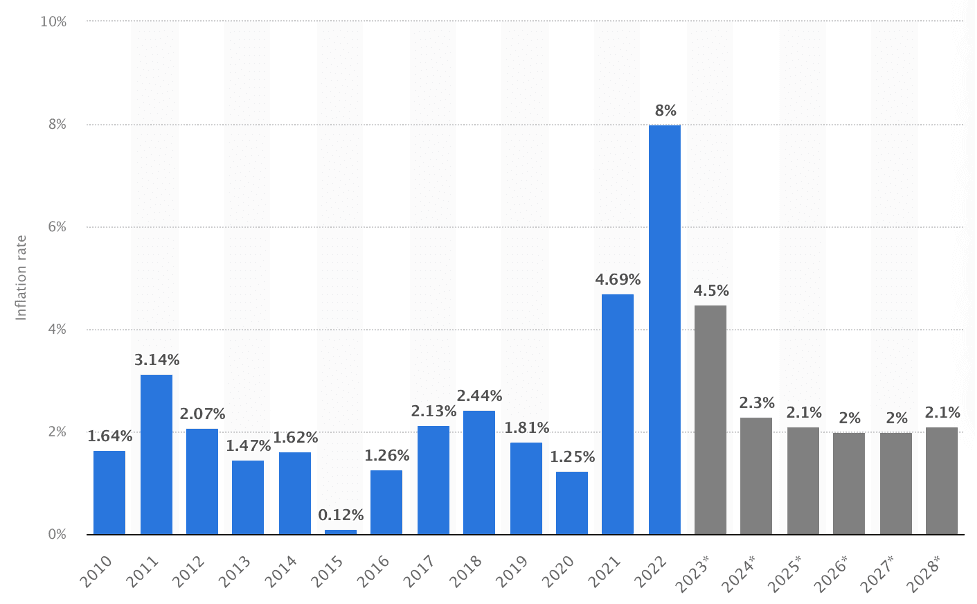
The Federal Reserve plays a critical role in managing inflation.
Its policies influence the real estate market. The market's response depends on decisions on interest rates and monetary policy.
National Median Home Prices
Median home prices vary widely across different locations in 2024. They reflect the diverse economic conditions and housing demands in various regions.
Real estate agents and economists provide valuable insights into these trends. They help paint a picture of the current state of home prices.
For instance, in 2023, it was $422,550.
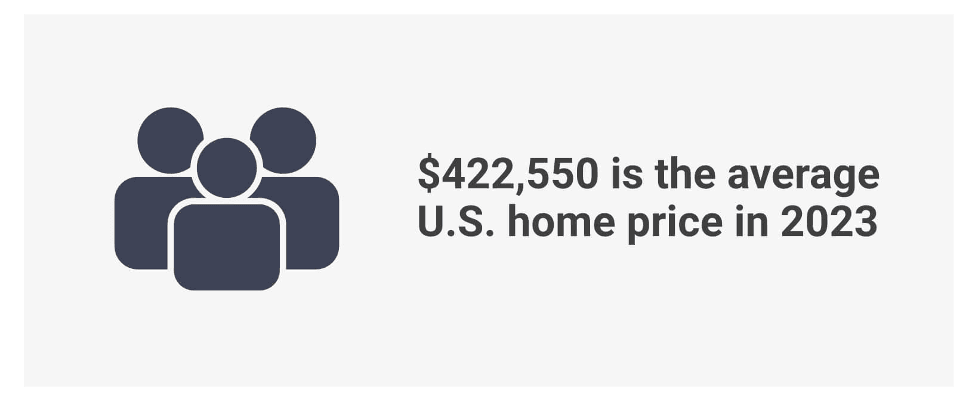
These figures are more than just numbers. They reveal the underlying economic health and consumer sentiment in each area, offering a window into the market's direction.
How to Be Successful in Real Estate in 2024 and Beyond
Success in the 2024 real estate market depends on strong branding. It also depends on strategic marketing and data-driven decision-making.
The market is navigating through economic shifts and consumer trends.
Real estate professionals must adapt and innovate to stay ahead.
This section will explain how to establish a solid brand identity. It’ll also explain how to market strategically and leverage data for informed decisions.
Establish Your Brand
The cornerstone of success in real estate lies in a well-defined brand identity.
This includes clearly articulating your mission, values, and unique selling proposition. Establishing a robust brand presence is vital for attracting and retaining clients.
For instance, photos on your website reflect your brand identity, so make sure you choose the right real estate photographer.
It’s also important to carve out a niche that speaks to your target audience.
This should reflect your brand's personality and positioning. A strong brand embodies the uniqueness and relevance of what you bring to the table.
Market Strategically
You must set your real estate brand apart in a competitive market.
In other words, you’ll need a strategic and targeted approach to marketing.
This means not only identifying specific market segments and target demographics. It also means developing tailored strategies to engage them.
Define your product's position in the market by analyzing market trends. You can also analyze consumer behavior. Then, strategize core ways to engage your target audience.
For a leg up, use Virtual Staging AI.
Advanced tools like Virtual Staging AI grant insight into customer preferences and behavior.
Virtual Staging AI can help personalize your marketing efforts through virtual staging, so your messaging can resonate with specific audience segments.

Incorporate techniques such as content marketing, social media campaigns, and email marketing. Make use of analytic tools to track their effectiveness and refine your approach.
Another key aspect is leveraging SEO strategies to enhance your online presence. This ensures your brand ranks higher in search engine results. Check out Luxury Presence for professional support here if needed.
Make Data-Driven Decisions
In today’s data-centric world, making informed decisions is key to real estate success. Data is plentiful and takes the guesswork out of marketing.
That’s why it’s important to gather and analyze relevant data. Identify crucial metrics that gauge your strategies’ effectiveness.
Start by identifying key performance indicators (KPIs). These include lead conversion rates, average selling time, and customer acquisition costs.
Use analytics software like Tableau or Google Analytics to track them.
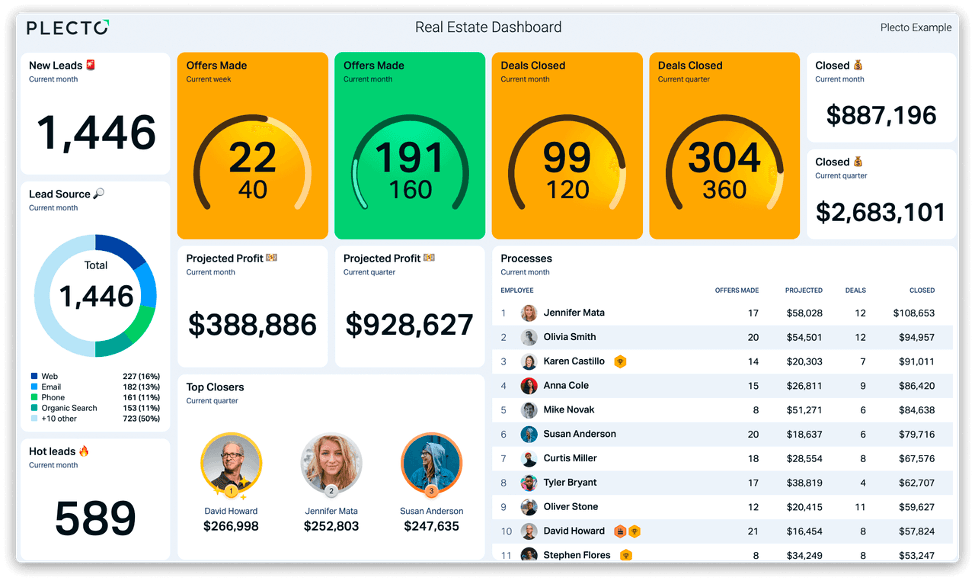
These tools provide a comprehensive view of market performance and client engagement. They help you understand what strategies are working.
For real-time market analysis, there are a few quality tools. Try out Zillow Research or Realtor.com’s Market Trends. These platforms offer up-to-date data on housing trends, pricing, and buyer behavior, so you can tailor your approach to current market conditions.
CRM tools like Salesforce or HubSpot can manage customer data. They also provide insights into client interactions and preferences. This data is crucial for personalizing your client approach and improving customer experience.
Finally, review data insights and be ready to pivot strategies when needed.
Check whether certain property types or locations are gaining traction. Adjust marketing efforts based on what you find.
For instance, if you notice a shift in buyer demographics or preferences, adapt your sales tactics to meet these new demands.
Remember, being agile and responsive to data trends is vital for success in real estate. To encourage higher conversion rates, you might also consider A/B testing your marketing assets, such as landing pages and marketing emails.
Before
After
Are You Prepared for a Future in Real Estate?
Emerging trends will influence the real estate landscape over the next five years. _These include shifting demographics and the increasing prevalence of remote work. _
Specifically, these factors will reshape housing demands and preferences.
If you’re a real estate professional aiming for success, it’s crucial to stay informed.
Embrace new tools like Virtual Staging AI and adapt to changing market dynamics.
Are you ready to leverage insights and tools to excel in real estate? Integrate these innovative strategies and technologies into your business model today.
Click here to learn more about how Virtual Staging AI can help you capitalize on an evolving real estate market.
Here’s to your success!